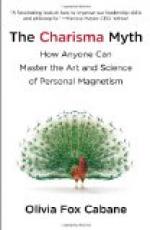Estimated according to its genuine value, therefore, an abstract conception may be divided into three classes—physical, moral, and intellectual. Whiteness and colours in general, levity and weight, hardness, sound, and the like qualities, are all abstract types which belong to the physical class. Goodness, virtue, love, hatred, and anger must be assigned to the moral class; and equality, identity, number, and quantity, etc., to the intellectual class. Such abstract conceptions, without which human speech would be impossible, did not in the case of primitive man take the explicit and reflex form in which they are presented by mature science, and it is expedient to inquire what character they really assumed in the spontaneous exercise of thought and speech.
There is certainly a difference between the mythical and specific types and the intrinsic value of these abstract conceptions. The former served for the causative interpretation of the living system of the world, and had a superstitious influence on the moral and social progress of mankind; the latter were merely the instrument of thought and speech, and were in spontaneous and daily use. But in spite of this difference, there was no radical and substantial diversity in the genesis of such conceptions, and the fundamental elements of perception were common to both. While the form varied, the primitive law and genesis remained the same.
We have shown that the perception of the phenomenon, as it affects the inner and external consciousness, necessarily involves the form of the subject, and the causative power which animates that form, and this becomes the intellectual source of special and specific myths. These myths, whether they are derived from physical or moral phenomena, are subsequently so completely impersonated as to be resolved into a perfectly human form. In the case of the abstract conceptions necessary in speech, such anthropomorphism does not generally occur; yet we see that sensation and a physiological genesis are inseparable from an abstract conception. Without such sensation of the phenomenon these conceptions would be unintelligible to the percipient himself and to others. In direct sensation, the phenomenon is external, and when it is reproduced in the mind the same cerebral motions to which that sensation was due are repeated.
It is an absolute law, not only of the human mind but of animal intelligence, that the phenomenon should generate the implicit idea of a thing and cause, and the necessity of this psychical law is also apparent in the abstract conception of some given quality. If the effect is not identical, it is at any rate analogous. Primitive man did not take whiteness, for example, considered in itself, to be an active subject, like the specific natural myths which we have mentioned, but he regarded it as something which had a real existence, and he might under certain circumstances invest it with deliberate power.




